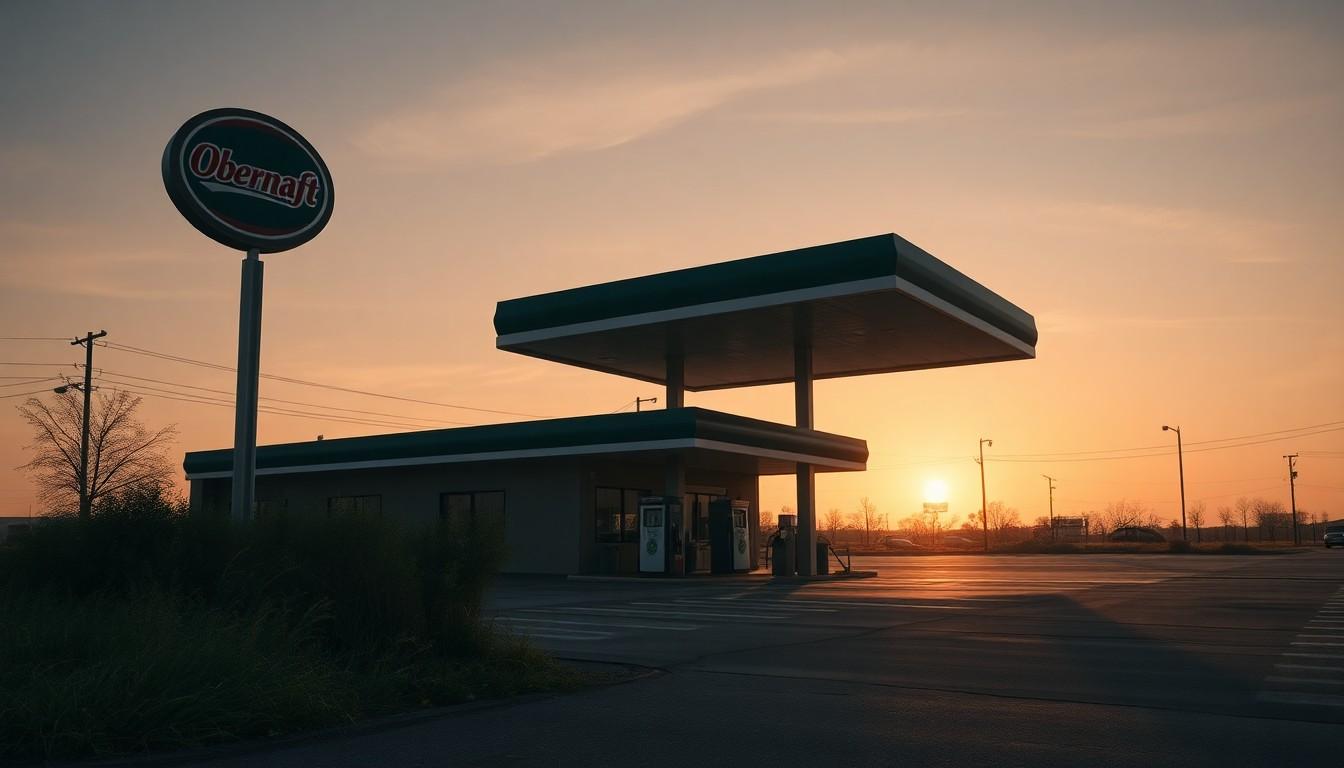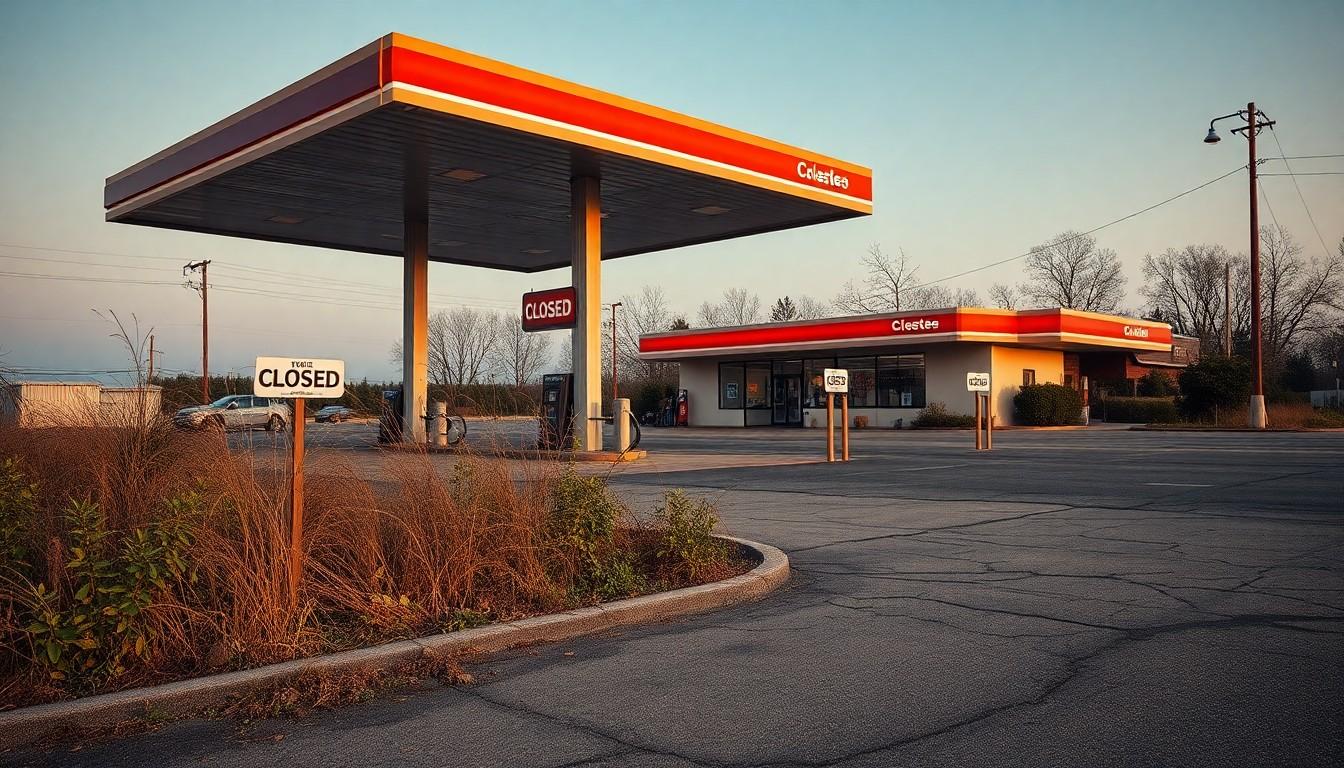
Why Are Obernaft Closing Down? The Shocking Truth Behind Their Closure
In a world where convenience reigns supreme, Obernaft has been a go-to for many, but now it’s hitting the brakes. Why are they closing down? It’s not because they ran out of coffee or lost a bet on the stock market. Instead, a mix of tough competition and changing consumer habits has led to this unexpected twist in the fuel game.
As gas stations evolve into mini-marts and tech-savvy apps take over, Obernaft finds itself at a crossroads. It’s a classic case of “adapt or get left behind.” So grab your popcorn—this story’s got more twists than a pretzel! Dive in to uncover the reasons behind this closure and what it means for the future of fuel and convenience stores.
Overview of Obernaft
Obernaft served as a popular fuel station known for its community presence. The company offered a range of services, primarily focusing on fuel sales and convenience items. Technology became increasingly essential in its operational strategy. Traditional fuel models struggled as consumer preferences shifted toward digital solutions, impacting foot traffic at physical locations.
Competitors evolved to meet demands for convenience, leading to mini-mart expansions. Customers now expect integrated services, such as food options and tech-driven applications for payments and loyalty rewards. Obernaft’s leadership recognized the need for innovation but faced delays in implementing necessary changes. As a result, footfall significantly declined over recent years, exacerbating the company’s challenges.
Understanding market dynamics proved crucial as Obernaft operated in a competitive environment. Operators noticed increased sales from stations that adapted to consumer preferences. Shifting demographics and lifestyle changes pushed many consumers toward brands that provided more than just fuel. Consequently, maintaining relevance necessitated urgent action.
Market analysis from experts indicated that fuel stations that modernized their offerings attracted more customers. These findings revealed that Obernaft’s traditional approach fell short. Observers noted that a lack of investment in technology and convenience options directly impacted sales. It became evident that failing to meet evolving consumer expectations contributed to the decision to close its doors.
As the industry evolves, understanding these trends shapes the future of fuel retail. Adapting to digital transactions and enhancing the in-store experience emerged as paramount needs in the sector. These observations paint a clear picture of the challenges facing Obernaft and the broader implications for fuel stations moving forward.
Reasons for Closure

Obernaft’s closure stems from various interconnected factors. The fuel station faced significant challenges that contributed to its decline in operations.
Financial Struggles
Declining sales figures plagued Obernaft as consumer preferences evolved. Revenue decreased due to dwindling foot traffic, affecting overall profitability. Delays in modernizing offerings became detrimental, as competitors swiftly adapted to market demands. Increased operational costs exacerbated financial challenges, leaving little room for sustainable growth. Market analyses revealed that the lack of investment in technology significantly impacted customer retention. Compounding these issues, rising maintenance expenses contributed to the strain on resources. As a result, the company’s financial health deteriorated steadily, leading to the tough decision to cease operations.
Market Competition
Intense competition reshaped the landscape for fuel stations, impacting Obernaft’s viability. Major players in the industry adopted innovative strategies, drawing customers away with attractive offers. The rise of mini-marts within gas stations further diluted Obernaft’s market share. Shifts in consumer preferences towards integrated services left the company behind. Rivals leveraged technology to enhance customer experiences, influencing purchasing decisions. Market analysts noted that stations prioritizing modernization thrived, while Obernaft fell short. With competitors outpacing it in service quality, Obernaft struggled to maintain relevance in a rapidly changing market.
Impact on Employees
The closure of Obernaft significantly affects its employees, creating uncertainty and distress within the workforce.
Job Losses
Many employees face immediate job losses as the company shuts down. Reports indicate that over 200 positions are at risk due to the closure, with full-time and part-time staff impacted. Workers accustomed to stable employment now confront unforeseen challenges in finding new jobs. Local job markets may not easily absorb this influx, especially in small communities. Individuals with specialized skills may find themselves competing for limited opportunities elsewhere.
Employee Support Programs
Obernaft committed to supporting its employees during this transition. The company announced initiatives that include job placement services and resume workshops aimed at enhancing employability. Additional resources such as counseling services help address emotional impacts associated with job loss. Employees seeking new employment can access training programs to develop skills relevant to current market needs. Community organizations also partner with Obernaft to facilitate connections and resources, enhancing support during this difficult time.
Customer Reactions
Customer reactions to Obernaft’s closure reflect a mix of disappointment and surprise. Many regular customers had developed strong ties to the station, valuing its community presence and familiar staff.
Feedback from Regular Customers
Feedback from regular customers highlights the affection they held for Obernaft. Customers frequently remarked on the friendly service and community atmosphere that defined their experience. The gas station had become a cornerstone for daily commutes and local gatherings. Some shared memories of interacting with staff, fostering a sense of family and loyalty. Upon hearing the closure news, numerous patrons expressed regret over losing a trusted local resource crucial for fuel and convenience items. The bond formed with the station left a notable impact, as customers mentioned feeling unsettled about future refueling options.
Alternatives for Consumers
Alternatives for consumers emerged as discussions around competitors intensified. Many customers turned to nearby gas stations offering modernized services and diverse product selections. Competitors like QuickFuel and SpeedyMart gained traction with enhanced loyalty programs and app-based rewards. Adoption of digital payment solutions and fuel rewards systems further cemented their appeal. Customers sought convenience, prompting some to explore delivery services and grocery store gas stations for combined shopping experiences. Meanwhile, community members began to identify local small businesses as potential substitutes, emphasizing the need for a reliable, customer-oriented service in their area.
Future Prospects
The closure of Obernaft opens various avenues for potential developments in the fuel retail market. Stakeholders might consider strategic buyouts as a way to enhance operational efficiency and streamline services.
Potential Buyouts
Buyouts could emerge as an attractive option for competitors seeking to expand their market presence. Several gas station chains, already successful in adapting to consumer demands, might view Obernaft’s closure as an opportunity for acquisition. Potential buyers could integrate existing community ties and establish brand loyalty within previously underserved markets. Merging operations could streamline costs by consolidating resources and enhancing service offerings. Interested parties may also benefit from Obernaft’s established customer base, allowing for a quicker transition and retention of loyal patrons. If executed efficiently, buyouts could lead to renewed vitality in local markets that currently lack modernized fuel services.
Business Lessons Learned
The challenges faced by Obernaft reveal critical lessons for the fuel retail industry. Failing to innovate can lead to downfall, especially in a rapidly changing market. Companies must recognize the importance of embracing technology to meet evolving consumer preferences. Investing in digital solutions and modernization plays a vital role in sustaining relevance. Moreover, understanding the significance of customer experience can enhance brand loyalty. Engaging with customers directly and remaining attentive to their needs strengthens community ties. Businesses should prioritize adapting to market trends to attract and retain customers, acknowledging that stagnation poses significant risks.
Conclusion
The closure of Obernaft marks a significant shift in the fuel retail landscape. As consumer preferences evolve and competition intensifies, the need for innovation and adaptation becomes undeniable. Obernaft’s struggle to modernize and meet changing demands ultimately led to its downfall.
The impact on employees and the community underscores the importance of a responsive business model in today’s market. While the closure brings challenges, it also opens doors for competitors to enhance their offerings and integrate Obernaft’s loyal customer base. The lessons learned from this situation serve as a crucial reminder for businesses to stay ahead of trends and prioritize customer experience in an ever-changing environment.
